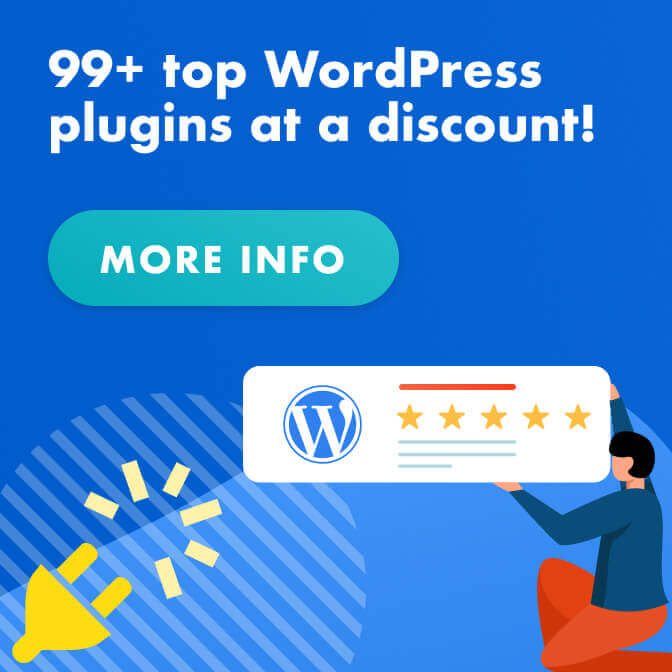WordPress, as one of the most popular content management systems, offers a lot of tools and plugins to enhance user engagement and boost conversion rates on your website.
Popups, when used strategically, can capture user attention, promote offers, and guide visitors through your site.

In this article, we’ll explore different types of WordPress popups and provide insights on how to effectively implement them on your website.
To create popups with ease you need to install a WordPress popup campaign plugin. Pick one that provides user-friendly tools to design, customize, and trigger popups without coding.
Thanks to templates and trigger options, you will be able to engage users, promote offers, and grow your emailing list without extensive coding knowledge.
December 2024 Offer – For a Limited Time Only:
Get WordPress Popup Plugin for 15% off! Don’t miss out!
10 Types of Popups Most Commonly Used in WordPress
1. Entry-Intent Popups
Entry-intent popups, also known as entrance popups, are designed to capture visitors’ attention as soon as they land on a webpage.
This WordPress popup type usually offers a discount after subscribing to a newsletter, or accessing special content in the form of an ebook, in exchange for a visitor’s email address or other type of interaction.
Some people find them annoying, but when implemented correctly, they can help websites turn visitors into returning customers.
You need to incorporate them thoughtfully. Entry-intent popups need to be clear, not pushy, and match the search intent of the visitor. Timing is crucial – they should pop up at the right moment to really grab your interest and hopefully make your browsing experience even better.
2. Exit-Intent Popups

Exit Intent WordPress popup type is used to stop the user from leaving a website, making the last effort to retain their attention. Such popups often offer incentives like subscription opportunities, free resources, or, most commonly, discounts.
While some users might find them a bit persistent, when designed with respect for user experience, these popups can be effective in capturing potential leads that would otherwise slip away.
Implementing them in a WordPress popup campaign requires a keen understanding of user behavior and timing.
These popups should appear at the exact moment when it seems the user is about to close the tab or navigate away from the site. The content of the popup should be compelling and offer a clear value proposition to encourage users to give the site another chance.
3. Timed Popups
Timed popups can be strategically scheduled to appear after a certain time passed or a specific user action took place.
This WordPress popup type can serve various purposes, from capturing leads through newsletter sign-ups to showcasing special offers or guiding users through your website’s features.
They can be used to deliver relevant information or incentives at points in the user’s journey where they are likely to be most receptive.
The timing of these popups plays a crucial role; too early, and they might disrupt the initial browsing experience, while too late, they risk missing the user’s attention.
When executed thoughtfully, timed popups can enhance user engagement, guiding visitors toward desired actions and providing value that aligns with their browsing journey.
However, it’s important to avoid bombarding users with too many popups, as this can lead to frustration and a negative perception of the website.
4. Scroll-Triggered Popups

Scroll-triggered popups, a dynamic feature in web design, are activated when users scroll down a webpage to a certain point.
This interaction-based approach allows websites to engage visitors at the precise moment when they’ve shown a deeper level of interest by scrolling.
Scroll-triggered popups often offer supplementary information, invitations to subscribe, or exclusive content that complements the ongoing browsing experience.
The key to effectively using this WordPress popup type lies in understanding user behavior and crafting pop up content that enhances their experience.
By aligning the popup message with the content the user is looking through, websites can provide additional insights or incentives that feel relevant and valuable. It’s important to strike a balance between popups appearing at the right scroll depth and not overwhelming users.
5. Click-Triggered Popups
Click-triggered popups, as the name suggests, are activated when users click on specific elements or buttons on a webpage.
This WordPress popup type is most commonly used in interaction-driven campaigns. It is particularly effective for delivering contextually relevant content, such as detailed product information or special promotions, that corresponds to the user’s interests at that specific moment.
Successful implementation of click-triggered popups needs to be based on understanding user behavior and their strategic placement.
The popup content should provide immediate value and be closely related to the clicked element, enhancing the user’s journey or offering a next step in website exploration. Keep in mind that it’s essential not to bombard users with too many popups of this type or use overly aggressive designs.
6. Button Popups
The effectiveness of button popups lies in their ability to effortlessly integrate into the user journey, offering users an extra layer of information or a value proposition aligned with what they are currently viewing.
This WordPress popup type often takes the form of Calls To Action (CTA) like “Learn More” or “Get Offer” buttons, after a visitor clicks on it, a popup window emerges, offering additional information, promotions, or next steps that correspond to the user’s specific interest.
Ensuring that the popup content directly relates to the button’s context and is presented in a clear and non-intrusive manner can contribute to their success.
Button popups, when implemented thoughtfully, can boost user engagement, foster informed decision-making, and guide users toward desired actions, making them a valuable asset in websites’ efforts to facilitate user interaction and achieve their objectives.
7. Floating Bar or Notification Popups

Floating bars, also known as notification popups, are a popular method of delivering important messages or updates to website visitors. They are often used in WordPress popup campaigns because of their versatility.
These non-intrusive bars typically appear at the top or bottom of a website, remaining visible even as the user scrolls through the content.
The floating bar WordPress popup design should be eye-catching yet not overly obtrusive, maintaining a balance between capturing attention and respecting the user experience.
This WordPress popup type is used mainly to communicate general discounts or updates. With an eye-catching but not overly intrusive design, this tool can help you generate more leads and contribute to a more interactive and user-centered online experience.
8. Full-Screen Popups (Interstitials)
Full-screen popups, also known as interstitials, are a WordPress popup type that covers the entire screen, temporarily taking over the user’s view when they interact with a website.
While interstitials can effectively convey critical information, they can also be seen as disruptive. Striking a balance between the message and the potential interruption to the user experience is essential to their success.
The design and timing of full-screen popups play a pivotal role in every WordPress popup campaign that uses them. Aesthetically pleasing visuals, clear messages, and thoughtfully selected content can capture users’ attention and deliver the intended message effectively.
However, remember to consider target audience behavior and preferences when deciding when and how often to display interstitials – overusing them or making them difficult to close can lead to frustration and potentially drive users away from the site.
9. Modal Popups

Modal popups are small windows that appear on top of a web page’s content. They are often used to display important messages, gather user input, or offer additional information without navigating to a new page.
Modals grab users’ attention while keeping them engaged with the original content, although their impact depends on proper design and timing to avoid being intrusive.
This WordPress popup type provides relevant value only if it appears at an opportune moment, such as when users express interest in the offer or before they leave a page. Striking the right balance between capturing attention and maintaining a smooth user journey is essential for their success.
10. Slide-In Popups
This WordPress popup type consists of subtle elements that appear on the side of a webpage and gradually slide into view as the user scrolls. They are unobtrusive and often present offers, subscriptions, or other calls to action, aiming to capture attention without interrupting the browsing experience.
By emerging gradually and not blocking the main content, slide-in popups can effectively convey messages while minimizing bumps in the user journey.
To be effective, the slide-in popups should appear after users have had a chance to engage with the main content, after which they can provide additional value or information.
When designed thoughtfully, these popups can strike a balance between capturing attention and maintaining a positive user experience, making them a valuable tool for websites aiming to engage users without being intrusive.
Types of WordPress Popups: Conclusion

WordPress plugins offer a wide array of popup options that cater to various user interactions and engagement goals. While popups can be incredibly effective, it’s essential to use them with caution. They should enhance the user experience rather than disrupt it.
The key lies in choosing the right popup type for your content and audience, crafting compelling materials, and aligning the design with your website’s aesthetics.
By using WordPress popups strategically and consistently testing and refining their performance, you can create a seamless user experience that guides visitors and drives conversions on your WordPress website.


